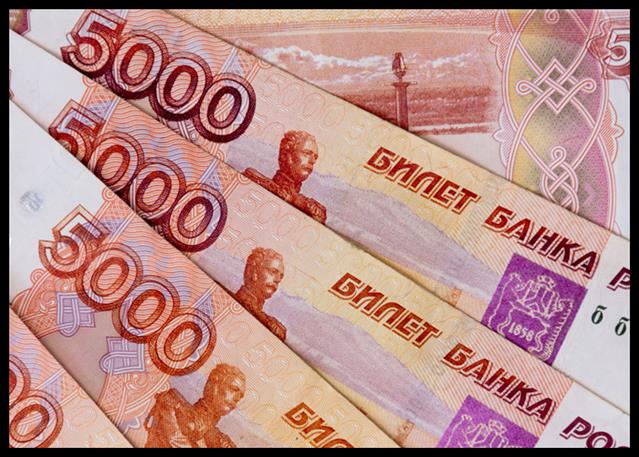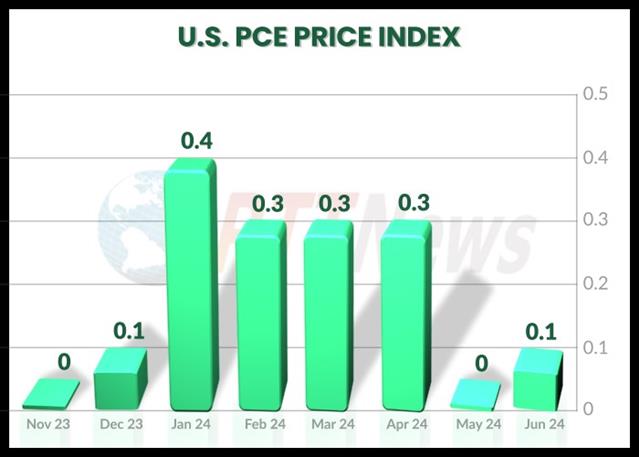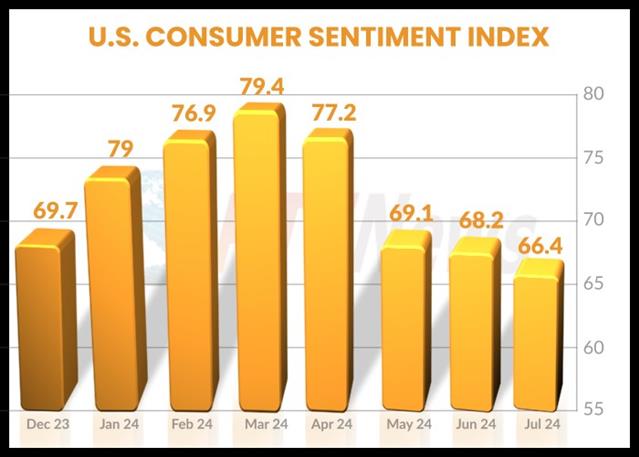Rate Fears And Safe-haven Demand Boosted Dollar Last Week
Renewed uncertainty about Fed rate cuts triggered by hotter-than-expected inflation readings as well as escalating tensions in the Middle East, catalyzed the Dollar’s massive climb during the week ended April 12. The U.S. dollar gained against the euro, the British pound, the Australian dollar as well as the Japanese Yen. The Dollar Index, which measures the Dollar’s strength against a basket of 6 currencies also surged during the week.
The Dollar Index or DXY added 1.65 percent during the week ended April 12. The Index which was at 104.29 on April 5 rallied over the course of the week to close at 106.01. The week’s trading range was slightly wider, with a low of 103.88 recorded on Tuesday and a 5-month high of 106.11 recorded on Friday.
Data released on Wednesday had showed the headline annual consumer price inflation in the U.S. jumping to 3.5 percent in March, from 3.2 percent in February, surpassing expectations of a reading of 3.4 percent. The core component thereof which was expected to fall to 3.7 percent, however remained steady at 3.8 percent. Inflation as well as core inflation on a month-on-month basis which was seen edging down to 0.3 percent, remained steady at 0.4 percent.
The Minutes of the Federal Open Market Committee held in mid-March which was also released on Wednesday revealed members not considering it appropriate to reduce rates until they had gained confidence that inflation was moving sustainably toward 2 percent.
Despite Fed Chair Jerome Powell’s earlier hints of three rate cuts in 2024, markets drastically scaled back rate cut expectations in the backdrop of sticky inflation, helping lift the Dollar. A less-than-expected reading of producer prices did not have much effect on the Dollar’s climb as markets digested the Fed’s hints that a rate cut was not imminent.
The CME FedWatch tool that tracks the expectations of interest rate traders evidenced this change over the course of the week spanning April 8 to 12. The probability of a Fed rate cut in the review scheduled for mid-June dropped to 28 percent on April 12 from 51 percent on April 8. Likewise, rate-cut expectations for the July review dropped to 57 percent on April 12, from 70 percent on April 8. Whereas markets had on April 8 expected an 88-percent chance for a September rate cut, it declined to 77 percent by April 12.
The EUR/USD pair slipped 1.78 percent during the week ended April 12 amidst a sharp contrast in the monetary policy outlook by the Federal Reserve and the European Central Bank. The ECB in its decision announced on Thursday held rates steady while also acknowledging the effect of past interest rate increases that continued to weigh on demand and helped push down inflation. The firm rate cut hints by the ECB contrasted with the caution sounded in the recent Fed minutes, dragging down the euro. The pair slipped to 1.0642 from 1.0835 a week earlier. The weekly trading ranged between 1.0886 and 1.0622.
Amidst the greenback’s strength, driven by the Fed’s hawkish monetary policy outlook, the sterling plunged 1.47 percent during the week ended April 12. The GBP/USD pair declined to 1.2450 on April 12, from 1.2636 a week earlier. The sterling’s weekly trading range was between $1.2711 and $1.2425. Data released on Friday had shown the U.K. economy expanded as expected by 0.1 percent in February, versus 0.3 percent in January.
The Aussie also could not withstand the Dollar’s might powered by hawkish monetary policy outlook, slipping 1.75 percent against the greenback during the week spanning April 5 to 12. From the level of 0.6578 recorded on April 5, the AUD/USD pair dropped to 0.6463. The pair touched a high of 0.6646 on Tuesday and a low of 0.6456 on Friday. Data released on Monday had shown a downtick in the consumer confidence indicator and an uptick in the business confidence indicator.
The Japanese Yen slipped to a 34-year low against the U.S. Dollar in the backdrop of hotter-than-expected inflation readings in the U.S. The pair breached the psychological level of 153 during the week ended April 12, to close at 153.28 on Friday versus 151.61 on April 5. The pair climbed from a low of 151.56 on Monday to a high of 153.40 on Friday triggering widespread speculation about a regulatory intervention in the currency markets.
Amidst an easing in the geopolitical tensions in the Middle East and a higher-than-expected retail sales reading from the U.S, the Dollar Index has eased to 105.94. The EUR/USD pair has edged up to 1.0646 whereas the GBP/USD pair has increased to 1.2479. The AUD/USD pair has also gained to touch 0.6475. Amidst the yen’s weakness, the USD/JPY pair has increased further to 154.30.
| Broker | Website | |
|---|---|---|
| 🥇 |  | Visit Broker >> |
| 🥈 |  | Visit Broker >> |
| 🥉 |  | Visit Broker >> |
| 4 |  | Visit Broker >> |
| 5 |  | Visit Broker >> |
| 6 |  | Visit Broker >> |
| 7 |  | Visit Broker >> |











